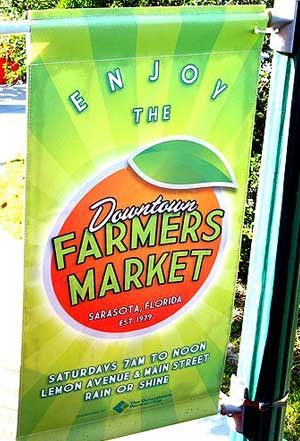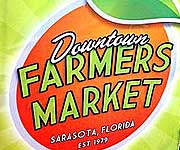 Too much of a good thing?Photo: Clyde RobinsonOn the heels of the USDA announcement that farmers markets are sprouting up at a swift pace comes a contrarian article in The New York Times suggesting that this phenomenal growth might represent too much of a good thing:
Too much of a good thing?Photo: Clyde RobinsonOn the heels of the USDA announcement that farmers markets are sprouting up at a swift pace comes a contrarian article in The New York Times suggesting that this phenomenal growth might represent too much of a good thing:
Farmers in pockets of the country say the number of farmers’ markets has outstripped demand, a consequence of a clamor for markets that are closer to customers and communities that want multiple markets.
Some farmers say small new markets have lured away loyal customers and cut into profits. Other farmers say they must add markets to their weekly rotation to earn the same money they did a few years ago, reducing their time in the field and adding employee hours.
Blogger Matt Yglesias — tempted to dismiss these farmers’ concerns — invokes Adam Smith to suggest that this is a case not of “supply outstripping demand” but of incumbent players wishing to reduce competition.
As someone who has recently lauded the growth of farmers markets as well as their job-creating potential, I’m certainly not inclined to assert that there are indeed too many of them. Yet there are issues worth exploring here. The prime complaint — that farmers find themselves spending too much time driving from market to market — suggests that some areas may be saturated with true farmers markets. One sign of this would be a spate of “counterfeit” farmers trying to get in to these new markets, i.e. resellers offering wholesale produce as their own. A dead giveaway is typically farm stands featuring out-of-season vegetables and tropical fruits.
The Wall Street Journal published a piece last year on this very real problem of resellers colonizing farmers markets and the attempts to address it. There’s also the more extreme case of a Washington state Safeway’s failed attempt to move some of its produce into the parking lot and sell it under a “farmers market” banner. These are big issues because farmers markets are meant to be a direct-sales outlet for farmers. And as I wrote at the time:
Direct farmer-to-consumer sales are the quickest, easiest, and cleanest way to increase farmers’ share of consumer spending. Right now that’s a mere 7 cents on the dollar. And farmers markets also represent a relatively easy way to improve access to healthy foods in low-income neighborhoods.
All of which remains true. However, farmers markets, while a two-bird stone, are not the only way to get healthy foods into low-income neighborhood. And while seasonal produce prices can be lower at farmers markets than at supermarkets, it’s also true that farmers markets present the $8-a-dozen egg quandary.
These issues led Los Angeles Times food writer Russ Parsons to observe that the incredible growth in farmers markets has come …
… despite what has to be one of the most inefficient business plans ever devised. If you wanted to design a market from scratch, this almost certainly wouldn’t be the way you’d do it. Let’s see … it’ll be open for only four hours a week. If a customer can’t make it, they miss it. Let’s just stick the markets wherever we can. And if shoppers can’t find a parking spot, they miss it. For farmers, there’s the not inconsiderable matter of having to drive hundreds of miles every day to spend hours standing outside, weighing lettuce and making change.
And it’s true. Farmers should farm for a living, not drive. It’s for this reason among others that the Union of Concerned Scientists’ “Market Forces” report called for investment in regional food infrastructure so that farmers have more sales channels available to them — whether it’s institutional sales to hospitals and schools, “food hubs,” or distribution cooperatives.
Indeed, an excellent option for farmers who want to farm more and drive less are groups such as the Lancaster Farm Fresh Cooperative in Pennsylvania, which aggregates produce and meat from multiple small, sustainable farms and sells it to institutions, restaurants, wholesalers, and even at farmers markets. It’s still small and local, but every farmer involved doesn’t have to spend all day driving and then hawking wares.
Not that there’s anything wrong with that! True farmers markets can and should proliferate — but the fact is that they are a very particular beast and don’t on their own represent the “answer” to food system reform. In a healthy food system, there need to be many outlets for fresh produce and humanely, sustainably raised meat. It’s even possible that some areas are saturated with true farmers markets, as the New York Times article suggests. What that really means, however, is that demand for fresh, local food is growing fast. That’s excellent news. It also means that we have to get serious about growing more farmers and more infrastructure along with growing more farmers markets.



